10. AMERICA RECOVERS – 1865-1880

GRANT AS PRESIDENT
CONTENTS
 The 1868 national election The 1868 national election
 Corruption on a grand scale Corruption on a grand scale
 Boss Tweed of Tammany Hall Boss Tweed of Tammany Hall
 The 1872 national election The 1872 national election
 The 1873 financial panic The 1873 financial panic
 "The South will rise again" "The South will rise again"
 Grant finishes out his term amidst Grant finishes out his term amidst
more rumors of massive scandal
The textual material on this webpage is drawn directly from my work
America – The Covenant Nation © 2021, Volume One, pages 323-328.
|
A Timeline of Major Events during this period
| 1860s |
Grant becomes US president
1868 Grant is elected
president (Nov); but he does not monitor his supporting politicians the
way he oncemonitored his troops
... and corruption on a grand scale seeps into his presidency
1869 Congress passes (Feb) – Republicans supportive, Democrats fully opposed – the 15th Amendment,granting the right to
vote by all citizens, regardless of "race, color, or previous condition
of servitude" (slavery); the following Feb (1870) it is ratified
Fisk and Gould
attempt to conrner the entire gold market; Grant responds by releasing
federal gold ... undercutting deeply their profits
|
| 1870s |
The Grant Administration
1870 Rockefeller
founds the Standard Oil Company ... the beginning of a huge energy
monopoly
1871 The British bring the Columbia region separating America from Alaska into the Canadian confederation ... disappointing Americans hoping to make an American connection there
1872 The Credit Mobilier scandal becomes public ... revealing the tricks of Union Pacific director Durant and his personal
banking firm Credit Mobilier to increase dramatically the company's
profits ... at the government's expense
Grant easily
reelected as US president ... in his run against Liberal Greeley
1873 Boss Tweed is finally brought to justice for the way he used his Tammany Hall organization – through his control of the state's Democratic Party – to literally run the state of New York ... at a huge profit to himself personally
Shipping and
railroad magnate Vanderbilt offers $1 million to start up a university
that bears his< name
But the country
suffers from a huge economic downturn that year ... the 1873 Panic
The Women's
Christian Temperance Union (WCTU) is formed to fight alcoholism ...
particularly rampant among America's industrial workers
1874 In reaction to the Panic, Republicans are swept from power
1875 With the Democrats now in charge in Congress, the Reconstruction Program for the South dies
1876 Widespread corruption within the Grant Administration (notably Babcock and the Whiskey Ring) causes the Republicans
to drop Grant as their presidential candidate ... and choose Hayes
|
THE
1868 NATIONAL ELECTION |
|
Grant elected president (1868)
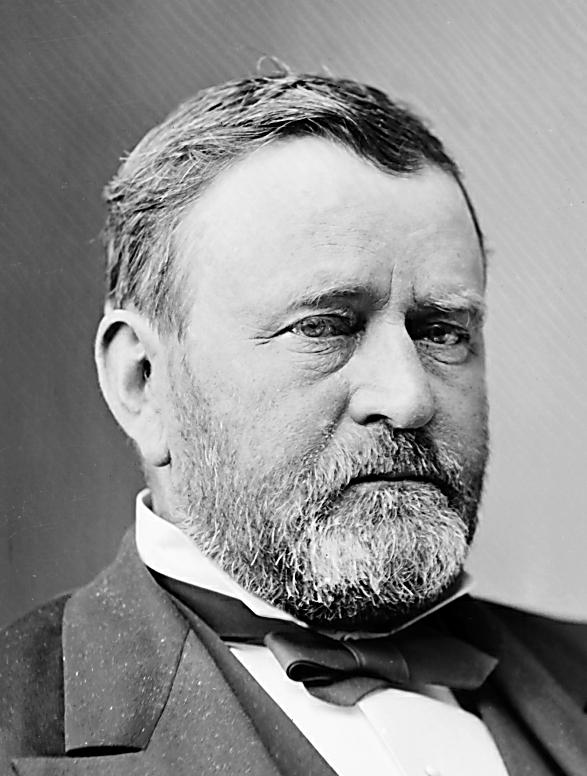 The
Republicans were quick to nominate Civil War hero Grant as their
party's candidate for president in the 1868 elections. The Democrats
dumped Johnson and nominated New York Governor Horatio Seymour (whose
White racist views made him appear to be opposed to the North's tough
Reconstruction policies). Thus a half million Black votes helped Grant
win (53 percent) in this election with an untypically high voter
turnout. But the electoral college, as usual, skewed the vote even
further in favor of the winning candidate, Grant with 214 electoral
votes to Seymour's 80.
The election was so close that
Republicans realized that if Confederates disqualified by the
Fourteenth Amendment had been able to vote (plus the three
unreconstructed Southern states not yet allowed to vote), the election
would have gone badly for the Republicans. Sensing that any potential
Democrat victory would undo the Republican Party's Reconstruction
program, Congress was quick to put into play in 1870 the Fifteenth
Amendment, making it illegal for a state to deprive a citizen of the
right to vote because of race, color or previous condition of
servitude. As a condition for readmission to the Union, the last three
hold-out Southern states – Texas, Mississippi and Virginia – had to
approve both the Fourteenth and Fifteenth Amendments.
|
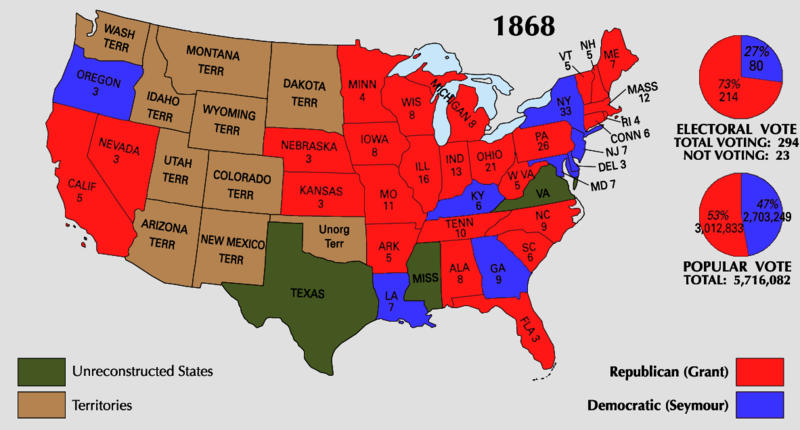
CORRUPTION ON A GRAND
SCALE |
|
But
Grant as a president was going to be much less aggressive than he had
been as a general. Tragically, he tended to trust too much those he had
placed in positions of authority and tended to be slow to check out
rumors of corruption rampant in his administration, or at least within
the higher realm of politics within the America he was supposed to be
inspiring and directing. Grant himself was not involved in the
corruption and often did act – usually belatedly – when a national
scandal broke out.
The Fisk–Gould gold scandal
A scandal that erupted early during the
Grant Administration was the effort in 1869 by Wall Street tycoons Jim
Fisk and Jay Gould to corner the American gold market. Buying up all
the gold they could at $135 an ounce, thus diminishing the nation's
gold supply and driving up the price of gold to $160 an ounce, they
anticipated gaining a huge windfall profit when they finally unloaded
their gold. But Grant learned of their scheme and stepped in to release
some of the federal government's gold supply, thus bringing down the
price of gold. Fisk and Gould thus came away with a much smaller profit
than they had anticipated. Sadly, although Grant's action was quite
correct, he could not escape the tendency of people to blame the
president for allowing this to happen in the first place.
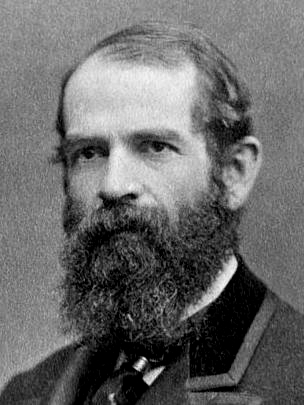
Jay Gould
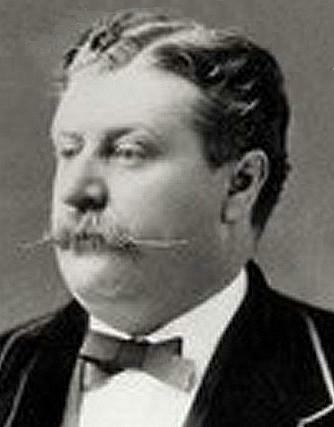
James
Fisk
The Crédit Mobilier scandal
An even bigger scandal broke out when the
public got wind in 1872 of the widespread corruption involved in the
huge project of laying railroad track designed to connect the nation
East and West. As early as 1862, during the Civil War, the federal
government had authorized $100 million in capital to build a 1750-mile
railroad westward from Council Bluffs, Iowa (on the strategic Missouri
River) by the Union Pacific Railroad Company and eastward from the
Pacific Ocean at San Francisco by the Central Pacific Railroad Company
– through desert, mountains and unfriendly Indian territory. It was
undertaken as a matter of national interest rather than as a
money-making capitalist enterprise because it was not expected that the
venture could ever recover its costs simply through the revenues it
would acquire when it was actually up and running. It simply had to be
built, by public funding if necessary.
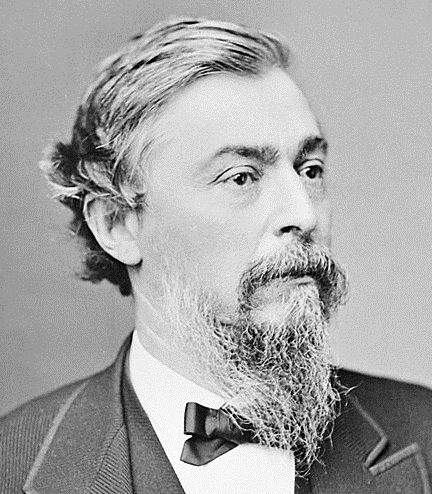 The
public funding actually took the form of federal land grants to these
railroad companies of approximately twenty million acres, valued at
somewhere around $50–$100 million, and cash loans of around $60
million, the loans to be eventually paid off by the sale of the land
granted to the railroad companies. To handle these financial
transactions Union Pacific director Thomas Durant
set up the banking firm, Crédit Mobilier of America (which had no
connection whatsoever with the famous French banking company of the
same name). The
public funding actually took the form of federal land grants to these
railroad companies of approximately twenty million acres, valued at
somewhere around $50–$100 million, and cash loans of around $60
million, the loans to be eventually paid off by the sale of the land
granted to the railroad companies. To handle these financial
transactions Union Pacific director Thomas Durant
set up the banking firm, Crédit Mobilier of America (which had no
connection whatsoever with the famous French banking company of the
same name).
Of a very highly questionable nature1
was that the directors of both the Union Pacific and the Credit
Mobilier happened to be the one and the same individuals. Worse, Union
Pacific stocks were sold to its directors and also to a number of
United States congressmen whose vital votes supported this expensive
venture (some thirty representatives from both parties were involved).
Stocks were sold to these insiders at par value, well under their
market value, thus securing enormous profits for these privileged
investors (some estimates put their profits at around $20 million
total) when they turned around to sell their shares on the open market.
Further, the railroads were granted
$16,000 for each mile of track laid on flat land, $32,000 for hilly
terrain, and $48,000 for mountainous terrain, tempting the companies to
wander across as much terrain as possible and also to exaggerate their
claims of miles of track laid, a monumental piece of corruption which
finally in 1872 the New York City newspaper Sun uncovered and ran a
damaging expos?bout, just in time for the 1872 national elections.
Once the revelation of the scandal broke
in 1872, Union Pacific stock dropped in such value that it left other
stockholders nearly bankrupt. And once again Grant was blamed by an
outraged media for not having intervened to block this whole corrupt
venture.
But it was a sign of the times. Such scandals, especially related to
the hugely lucrative business of railroad construction (which was
expanding rapidly everywhere in the country), would unfortunately be
very typical of the way America found itself developing economically in
the last quarter of the 19th century.
1There
was considerable opposition within the general public and in Washington
to the venture by those who did not see the strategic need for such an
expensive venture.
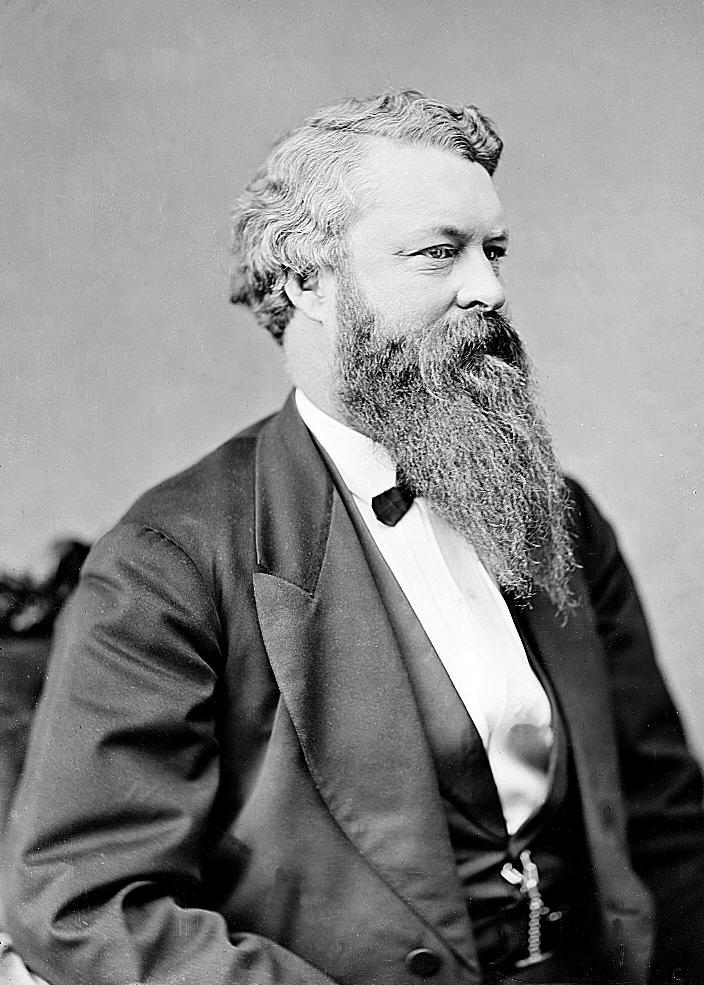 William Belknap – Grant's
War Secretary and close friend who resigned amid charges
of having accepted bribes
William Belknap – Grant's
War Secretary and close friend who resigned amid charges
of having accepted bribes
BOSS TWEED OF TAMMANY HALL |
|
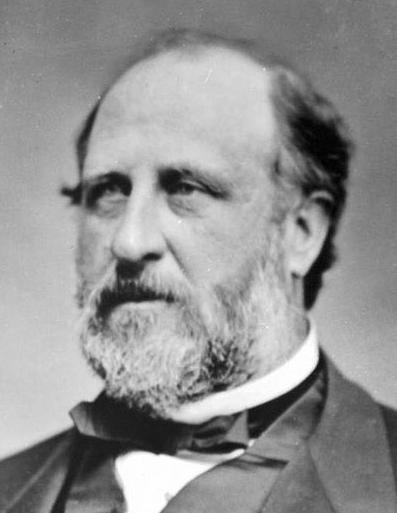 Another
scandal of the times, not connected to the Grant Administration
however, was the New York City Democratic Party's political machine,
Tammany Hall, operating under the direction of William "Boss" Tweed.
Tammany Hall was originally set up as an organization designed to help
immigrants (notably the Irish) get established in America. Such
assistance, of course, came with the expectation that immigrants would
then support the organization when it came time for local elections,
ensuring Democratic Party control of the city and all its patronage
jobs. Boss Tweed, who took over the organization in 1863, served on a
number of city and state committees and boards and even on the New York
State Senate (1868–1873). He eventually ended up controlling much of
the New York state legislature, New York courts, the city treasury, and
the huge cash flow that accompanied his various positions. Another
scandal of the times, not connected to the Grant Administration
however, was the New York City Democratic Party's political machine,
Tammany Hall, operating under the direction of William "Boss" Tweed.
Tammany Hall was originally set up as an organization designed to help
immigrants (notably the Irish) get established in America. Such
assistance, of course, came with the expectation that immigrants would
then support the organization when it came time for local elections,
ensuring Democratic Party control of the city and all its patronage
jobs. Boss Tweed, who took over the organization in 1863, served on a
number of city and state committees and boards and even on the New York
State Senate (1868–1873). He eventually ended up controlling much of
the New York state legislature, New York courts, the city treasury, and
the huge cash flow that accompanied his various positions.
He was reported to have helped Jay Gould
and Jim Fisk take control (1866–1868) of the Erie Railroad from the
equally adventuresome Cornelius Vanderbilt with fake stock (which Boss
Tweed was able to get the New York state legislature to authorize),
receiving a considerable share of that stock himself plus a position on
the company's Board of Directors.
The amount of graft that Boss Tweed
acquired is still uncertain, it was so extensive. He was accused and
tried in a series of court cases starting in 1873 for stealing from the
New York taxpayers an amount ranging from $25 to $45 million (more
recent estimates put that figure at closer to 100 million in 1877
dollars). He was in and out of prison (at one point he even escaped to
Spain) until 1878, when he died in prison at age fifty-five. But
Tammany Hall itself quietly survived Boss Tweed's demise, to conduct
business as usual well into the 20th century.
|
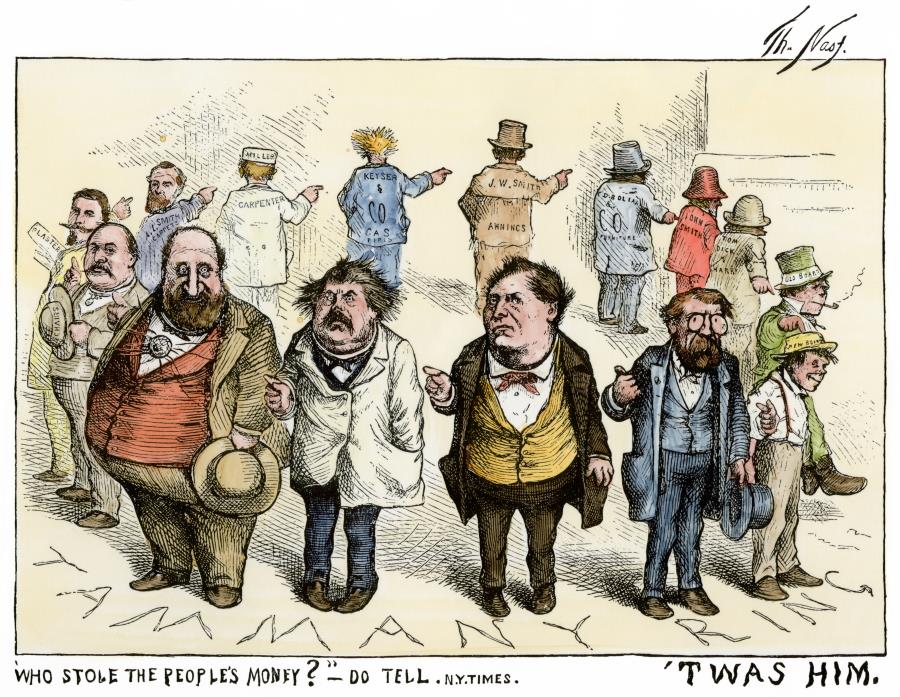
Boss Tweed's well-known New York Tammany Hall "Circle of Corruption"
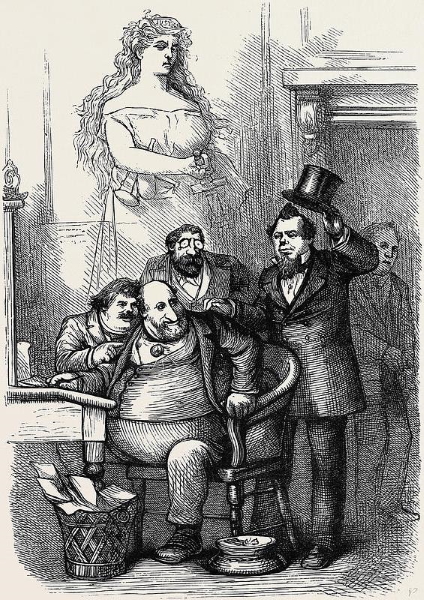
Tweed's arrest in 1876
THE 1872 NATIONAL ELECTION |
|
All this corruption, well-covered by press
expos? naturally called forth the need for extensive political reform
in the North itself. Consequently, a new political grouping came into
being in advance of the national elections: the Liberals. Taking a
broader view of the South than the vengeful Radicals, the Liberals
found themselves joined with the Democrats (ironic for such a reformist
grouping, since the Democrats were identified closely with Tammany
Hall) in calling for a lifting of the heavy-handed Reconstruction
program imposed on the South by the North. In anticipation of the 1872
presidential election they nominated newspaper editor and ardent
reformer (also Socialist) Horace Greeley, to run against the Republican
Party's candidate, President Grant.
In the election itself Grant won handily
the vote of the electoral college (300 to 60), though Greeley won 44
percent of the popular vote. Thus Grant was going to have four more
years in the White House. But Grant's second term in office would be as
troubled as his first term.
|
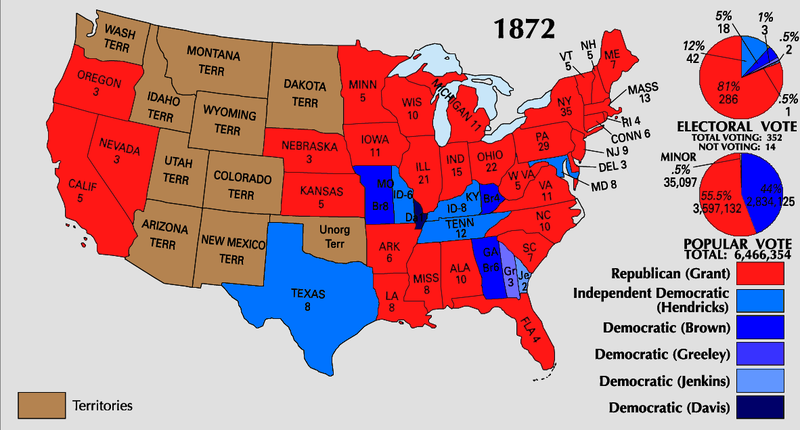
|
The failure of a major brokerage firm, brought
down by its heavy involvement in Northern Pacific railroad bonds, set
off a financial panic on Wall Street which soon led to the collapse of
a number of banks and other investments houses. The situation became so
bad that Wall Street shut down business for ten days to cool down the
panic.
Worse, this crisis was timed with the
decision by Grant to remove readily available silver as a standard for
the dollar, leaving the dollar reliant only on gold as its metallic
standard. While this may have strengthened the dollar, it restricted
dramatically the ability of investors and entrepreneurs to gain easy
credit for opening up or expanding their business base. This hit
particularly hard the massive farming industry which always relied on
bank loans to carry farmers from planting time in the spring until
harvest time in the fall, when finally the farmers would see income.
Grant did not understand the severity of
the financial crisis that hit the country in 1873, thinking the
downturn in the nation's economic activity to be merely a normal
fluctuation in the economy – which certainly happens from time to time.
But this was no mere fluctuation, the economy going into a stall which
lasted five long years (termed at the time the Long Depression) and
which saw almost ninety railroad companies go bankrupt. Grant refused
to back down from his tight monetarist strategy, believing that the
strong dollar was more important to the nation's economy than the
easy-credit strategy that the nation had been pursuing, a strategy
leading to the vast corruption that had sullied the reputations of the
railroad and banking companies.
But this was a bad time to put additional
brakes on the nation's economy, because it would have severe political
as well as economic consequences. As a result of the 1873 Panic, there
occurred a major sweep in 1874 of the Republicans out of office
everywhere, including the U.S. House of Representatives, where the
Democratic Party took control. This did not bode well for a
continuation of the North's Reconstruction program for the South.
|
"THE
SOUTH WILL RISE AGAIN" |
|
In the meantime political tensions had been
building in the South, where the Democratic Party was regaining
political ground under the leadership of former Confederate officials,
termed Bourbon or Redeemer Democrats. They had been gathering Southern
White political support by stoking the Whites' fears of the rising
political power that the Blacks had acquired through Congress's
Reconstruction policies. Also the KKK was gathering strength – and
vindictiveness.
This in turn brought Congress to pass
another round of legislation (1871–1872) designed to protect Black
voting rights in the South and curb the behavior of the KKK and other
Southern organizations like it. But this only inspired even greater
bullying behavior on the part of those White racist organizations,
making life even more difficult for the Southern Black.
One by one these Redeemer Democrats were
able to take over the state legislatures of the South and begin the
passing of a round of segregationist "Jim Crow" laws. But in addition
to playing the race card as their ticket to power, they employed other
populist tactics such as calling for the end of the huge indebtedness
of their state governments – by simply repudiating those debts – and by
calling for the end of government subsidies for businesses (such as the
railroads). It made for great popularity among frustrated White voters,
but foolishly undercut the possibility of the South working its way out
of its poverty (repudiating debts was a sure way of cutting off any
future investments in the Southern economy). And prolonged economic
hard times would only harden the attitudes of a racist South.
|
GRANT FINISHES OUT HIS PRESIDENTIAL TERM AMIDST MORE RUMORS
OF MASSIVE SCANDAL |
|
Grant's tendency to grant unreserved trust to
those he had appointed to office would shake his administration to the
core. Worse, he would tend to side with those accused of corruption,
seeing them simply as victims of political opportunists. Indeed, he
seemed totally blind to the corruption going on around him, which was
rampant. Payoffs for appointments by officials below him, such as
Grant's personal secretary, Orville E. Babcock, were normal procedure
during the Grant years. Within his Treasury Department a tax collector
had set up a scheme to overlook owed taxes, until a sufficient amount
had accumulated that he could then go in and collect, plus a sizable
fine which went into the tax collector's pocket.
Meanwhile a huge Whiskey Ring owing
enormous amounts of taxes ($3 million) on their whiskey had been
allowed to develop, until finally Grant appointed an honest treasury
secretary who went in and cleaned house. But when Babcock was also
implicated in the deal, Grant threw his protection around his personal
secretary, and even pardoned a number of leaders of the Whiskey Ring
who had been found guilty and imprisoned.
Corruption touched everything from the
War Department to the Department of the Interior as Grant appointees
used their power to extract bribes and other payoffs for their
services, becoming simply part of business as usual when dealing with
the federal government.
Grant did appoint reformers empowered to
clean out such corruption. But the corruption was so extensive that his
efforts brought little relief from his growing reputation as running a
very corrupt Administration. As a consequence, in 1876 the Republican
Party distanced itself from him at the convention called to select a
new Republican candidate for the presidency.
|
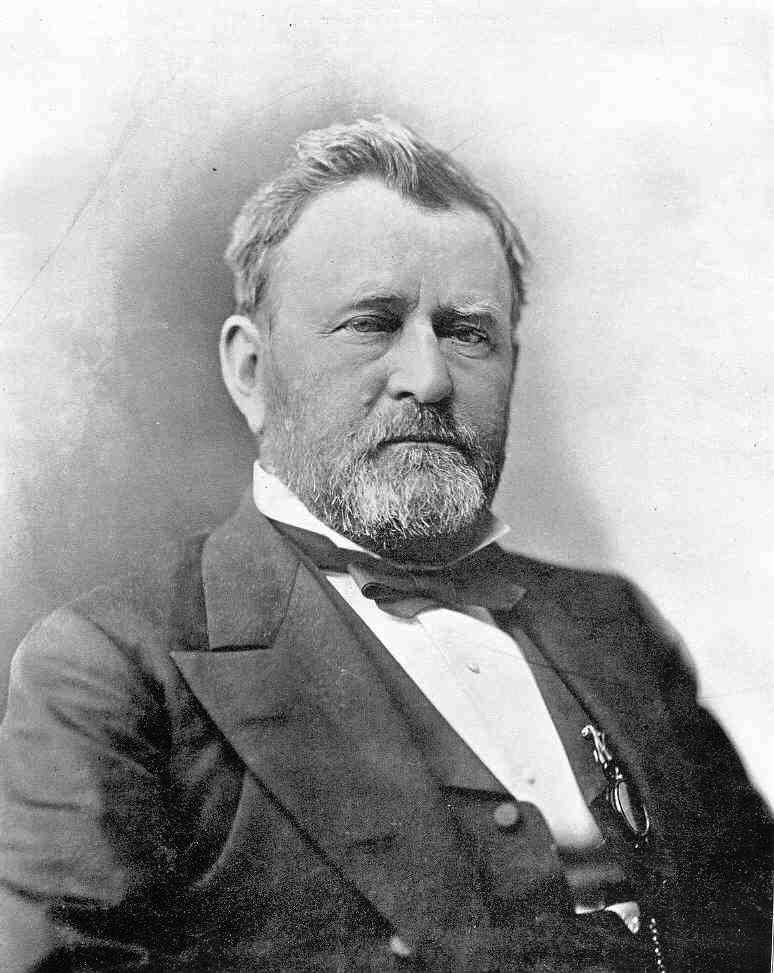
Ulysses S. Grant – President
1869-1877
Library of
Congress
 Miles
H. Hodges Miles
H. Hodges
| | |

 The 1868 national election
The 1868 national election
 Grant finishes out his term amidst
Grant finishes out his term amidst








 The
public funding actually took the form of federal land grants to these
railroad companies of approximately twenty million acres, valued at
somewhere around $50–$100 million, and cash loans of around $60
million, the loans to be eventually paid off by the sale of the land
granted to the railroad companies. To handle these financial
transactions Union Pacific director
The
public funding actually took the form of federal land grants to these
railroad companies of approximately twenty million acres, valued at
somewhere around $50–$100 million, and cash loans of around $60
million, the loans to be eventually paid off by the sale of the land
granted to the railroad companies. To handle these financial
transactions Union Pacific director 
 Another
scandal of the times, not connected to the Grant Administration
however, was the New York City Democratic Party's political machine,
Tammany Hall, operating under the direction of
Another
scandal of the times, not connected to the Grant Administration
however, was the New York City Democratic Party's political machine,
Tammany Hall, operating under the direction of 




